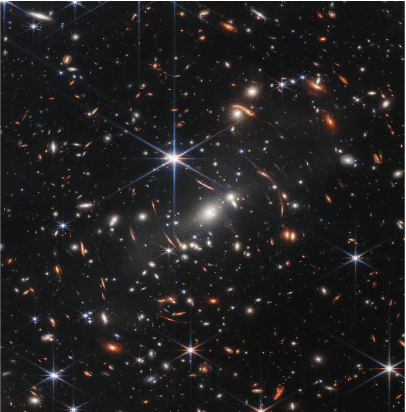According to the groundbreaking findings, the first galaxies were small and dim. They were dimmer than galaxies today, converting only less than 5% of their gas into stars. Also, the first galaxies did not emit much higher intensity radio radiation than we see today. * The research published in the journal Nature Astronomy was led by Prof. Renan Barkana from Tel Aviv University

An international team of astrophysicists, led by Prof. Renan Barkana from the School of Physics and Astronomy at Tel Aviv University, for the first time succeeded in statistically characterizing the first galaxies in the universe - which formed only about 200 million years after the Big Bang. According to the groundbreaking results, the first galaxies were small and dim. They were dimmer than galaxies today, converting only less than 5% of their gas into stars. Also, the first galaxies did not emit much higher intensity radio radiation than we see today.
The new study was conducted in collaboration with the SARAS group, led by the research group at Cambridge University in England by Dr. Anastasia Fialkov, who herself was a doctoral student of Prof. Barkana at Tel Aviv University. The results of the pioneering research were published in the prestigious journal Nature Astronomy.
"This is a very new field and the first study of its kind," explains Prof. Barkana. "We are trying to understand the first stars in the universe, the so-called 'cosmic dawn', about 200 million years after the big bang. The new James Webb Space Telescope for example can't really see these stars, but a few extremely bright galaxies from a slightly later period. Our ambition is to succeed in characterizing the entire population of the first stars."
According to the accepted model, before stars began fusing heavier elements in their cores, our universe was nothing more than a cloud of hydrogen atoms from the Big Bang (plus dark matter). Even today most of the universe consists of hydrogen gas, but in the modern universe most of this hydrogen is ionized due to the radiation of the stars.
"Hydrogen atoms naturally emit electromagnetic radiation with a wavelength of 21 cm, which is in the radio range," says Prof. Barkana. "Since the radiation from the stars changed the radiation emitted by the hydrogen atoms, the idea is to use hydrogen as a detector of the first stars: if we manage to see their effect on the hydrogen, we can know when they were born, how they arranged themselves in the galaxies, etc. I am one of the first theoreticians who developed this idea already 20 years ago, but from an observational point of view it is only now that they manage to apply it. Around the world there are several research groups trying to discover the 21 cm signal of hydrogen in the ancient universe."
One of these groups is EDGES, which uses a relatively small radio antenna that measures the average all-sky radio radiation coming from different periods of the cosmic dawn. In 2018, the EDGES group announced that they had found the 21 cm signal from the ancient hydrogen atoms.
"The problem is that it is difficult to convince that it is indeed the signal of the first hydrogen atoms that absorbed radiation from the first stars, and not a signal from the electrical conductivity of the dirt under the antenna," says Prof. Barkana. "That's why they waited for another independent measurement that would confirm or deny the findings, and indeed last year astronomers in India conducted another experiment called SARAS. This time the antenna floated in the lake, so that the homogeneous water could not produce interference that would look like the signal, and according to their results, there is a 95% chance that the EDGES signal is such an interference. SARAS actually found the upper block of the signal in the sky, and found it to be significantly weaker than the signal that EDGES allegedly found. Assuming that the SARAS measurement is good and correct, we checked what its implications are for the first galaxies, i.e. what were their properties according to the upper limit of the signal. This is the first time we can say that there was no possibility of the existence of galaxies of a certain type in such an early period."
Prof. Barkana concludes: "Galaxies today, like our Milky Way galaxy, emit a lot of radio waves. We put a first upper limit on the star production rate in the early galaxies, and also on their total radio emissions. And that is just the beginning. Every year more sophisticated experiments are conducted and as a result stronger and stronger barriers are published, in an attempt to get a first picture of the cosmic dawn. We hope that soon we will have not only barriers but also accurate and reliable measurement of the signal."
More of the topic in Hayadan:
- Webb discovered the oldest galaxies, their age and properties surprised astronomers
- A sea of galaxies awaits: the COMAP project will make it possible to study the early era of galaxy formation
- Hubble captured the deepest picture of the universe
- Evidence of stars formed only 250 million s after the big bang
